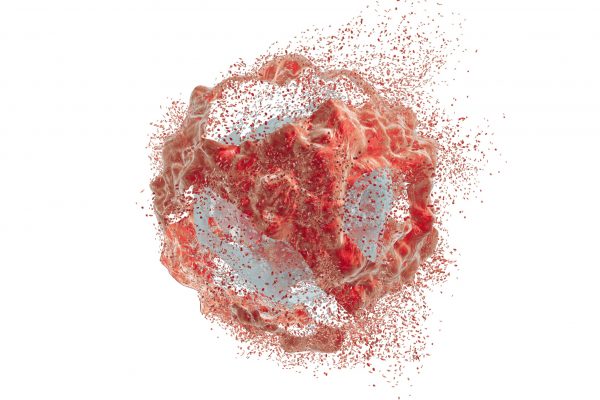
Previous studies have shown that the combination of ibrutinib and venetoclax (I+V) improves outcomes in patients with chronic lymphocytic leukaemia (CLL) compared with chemoimmunotherapy. However, it is not clear whether I + V treatment guided by measurable residual disease (MRD) would be superior to fludarabine-cyclophosphamide-rituximab (FCR). Results of the FLAIR trial revealed that, in patients with previously untreated CLL, MRD-guided I + V treatment improved progression-free survival compared to FCR, with a trend towards improved survival and no new safety concerns.1,2
In patients with chronic lymphocytic leukaemia (CLL), combination treatment with ibrutinib, an irreversible Bruton’s tyrosine kinase inhibitor (TKI), and venetoclax, a small molecule inhibitor of Bcl-2, has demonstrated improved outcomes compared to chemoimmunotherapy. A new trial evaluated whether personalised I+V therapy using measurable residual disease (MRD) to guide the direction of treatment would be superior to fludarabine-cyclophosphamide-rituximab (FCR).1,2
Methods
The phase III FLAIR trial included patients with previously untreated CLL who were randomly assigned to receive I+V or FCR. In the I+V group, after two months of ibrutinib, venetoclax was added for up to six years of therapy. The duration of I+V therapy was defined by MRD assessed in peripheral blood and bone marrow and was double the time taken to achieve undetectable MRD. The primary endpoint was progression-free survival (PFS) in the I+V group compared with the FCR group. Key secondary endpoints included overall survival (OS), response, MRD, and safety.2
Findings
In total, 523 patients were randomly assigned to the I+V group or the FCR group. After a median follow-up of 43.7 months, disease progression or death had occurred in twelve patients in the I+V group and 75 patients in the FCR group (HR[95%CI]: 0.13[0.07 to 0.24]; P<0.001). At the 3-year mark, PFS rates were reported at 97.2% vs. 76.8% in the I+V and FCR groups, respectively. Death occurred in nine patients in the I+V group and 25 patients in the FCR group (HR[95%CI]: 0.31[0.15-0.67]). At three years, 58% of the patients in the I+V group had stopped therapy due to undetectable MRD. After five years of I+V therapy, 65.9% of the patients had undetectable MRD in the bone marrow and 92.7% had undetectable MRD in the peripheral blood. The risk of infection was similar in the I+V and the FCR groups. The percentage of patients with serious cardiac adverse events was higher in the I+V group than in the FCR group (10.7% vs. 0.4%).2
Conclusions
In patients with previously untreated CLL, I + V treatment guided by MRD improved PFS compared to FCR. Additionally, OS results also favoured I+Vand there were no new safety concerns.2
REFERENCES